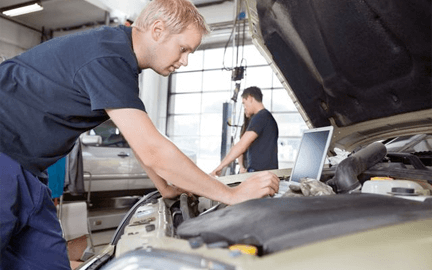In New Zealand’s commercial transport sector, vehicle uptime isn’t just preferred—it’s essential. Whether you manage a small fleet of vans or oversee dozens of service vehicles across multiple job sites, performance and reliability are what keep operations moving. Among the many systems that demand attention, one is often overlooked until something goes wrong: the power steering system.
When steering performance deteriorates, it doesn’t just impact the driver’s experience. It compromises safety, risks mechanical failure, and can put a fleet vehicle out of service—all of which cost time and money. In a commercial setting, where vehicles carry heavier loads and rack up higher mileage under demanding conditions, power steering systems are placed under far more strain than the average private car.
This article is for commercial operators, fleet managers, and workshop owners looking to understand the role of power steering maintenance in keeping vehicles reliable, safe, and road-ready.
Why Power Steering Matters in Commercial Vehicles
Power steering is more than a comfort feature in commercial vehicles—it’s a functional requirement. The system allows drivers to manoeuvre heavier vehicles safely, especially at low speeds or when parking, turning in tight spaces, or operating under load.
Commercial vehicles such as utes, vans, delivery trucks, and utility vehicles often operate with added weight, towing capacity, or long-haul intervals. These conditions place consistent pressure on the power steering system, particularly on the pump, steering rack, and fluid.
When power steering begins to underperform, the first signs are usually subtle: stiffness in the wheel, uneven steering feel, or a slight delay in response. Left unaddressed, these issues can escalate quickly, leading to increased driver fatigue, risk of accident, or outright system failure that renders the vehicle unusable.
For fleet managers, that’s more than a repair—it’s lost productivity, potential contract delays, and unplanned costs.
Common Steering System Issues in Commercial Use
Commercial vehicles experience different wear patterns than passenger cars. They are often driven for longer hours, in more demanding environments, and by multiple operators with varying driving habits. As a result, certain power steering problems are more common in commercial applications.
Fluid Leaks
Power steering systems rely on hydraulic fluid to function. Over time, seals can wear out due to heat and pressure, leading to leaks. If fluid levels drop too low, the system can quickly overheat or fail.
Hose Deterioration
The hydraulic hoses in commercial vehicles handle higher pressure than typical cars. Cracks or bulges in these hoses are signs of age and wear. Failure can result in total steering loss.
Pump Failure
The power steering pump is one of the most common failure points, particularly in vehicles with high mileage or frequent stop-start driving. A whining noise when turning the wheel is an early warning sign.
Rack and Pinion Wear
In commercial vehicles, the rack and pinion assembly may wear faster, especially if the steering system is under constant strain. Play in the steering wheel or knocking sounds during turns may indicate worn components.
Contaminated Fluid
Old, dirty fluid can degrade seals and damage internal parts. Regular flushing is critical to keep the system clean and functioning properly.
Preventative Maintenance: Staying Ahead of Downtime
Proactive maintenance is key to keeping your vehicles on the road and avoiding costly failures. Power steering systems don’t need attention as frequently as oil changes, but that doesn’t mean they can be ignored.
Service Intervals
There’s no one-size-fits-all answer, but most commercial steering systems should be inspected every 20,000 to 40,000 km, or annually, whichever comes first. Vehicles under heavy load or with long engine hours should be checked more frequently.
What a Power Steering Service Includes
A thorough power steering service typically involves:
- Inspecting and topping up or replacing the hydraulic fluid
- Checking for leaks, cracks, or damage in hoses and seals
- Pressure testing the system to identify underperforming parts
- Cleaning or flushing the system if contaminants are found
- Listening for irregular pump or rack noises
For fleets, logging these inspections as part of your regular servicing schedule ensures problems are caught early, before they take a vehicle off the road.
Repairs vs Rebuilds: What’s Best for Your Vehicle?
When issues are found, commercial operators often face the question: replace the part or rebuild it?
Replacing
Replacement is straightforward but can be costly, especially for late-model trucks, imported vehicles, or uncommon systems. If part availability is limited, lead times can delay your repair.
Rebuilding
Rebuilding a pump, rack, or valve can be a more cost-effective alternative, particularly if you work with a specialist. A proper rebuild involves disassembling the component, replacing seals and bearings, reassembling it to manufacturer specifications, and testing it under load.
When to Choose Rebuild
- The part is no longer easily sourced
- You need to control costs across a fleet
- You want to avoid waiting weeks for delivery
- The component is rebuildable and shows no severe structural damage
Rebuilding also offers an environmental benefit—reducing waste and extending the life of quality components.
Choosing the Right Specialist for Commercial Steering Work
Not all mechanics are steering specialists. When it comes to critical systems like power steering, working with an experienced professional is a worthwhile investment, especially for commercial operators.
Why Specialisation Matters
Steering systems involve precise hydraulic pressures, sensitive seals, and exact tolerances. A general repair shop may lack the diagnostic tools, technical knowledge, or parts access to complete the job correctly and efficiently
Specialists can identify early-stage issues that might be missed during a general service. They also have the expertise to perform complex rebuilds that restore factory-level performance, without the price tag of brand-new parts.
What to Look For in a Steering Partner
- Proven experience with commercial vehicle types and brands
- Fast turnaround times and in-stock rebuild kits
- Warranty coverage on parts and labour
- Transparent pricing and detailed inspection reports
- The ability to service and rebuild power steering racks, pumps, and boxes
- A commitment to minimising vehicle downtime
Fleet managers should aim to build a relationship with a trusted provider. The right partner can offer priority service, track vehicle history, and provide cost-effective options as fleet needs evolve.
Power Steering Services: What Commercial Operators in NZ Need to Know About Maintenance and Reliability
Power steering may not always be top-of-mind when planning vehicle maintenance, but for commercial fleets, ignoring it is a mistake. A failing system doesn’t just affect handling; it risks your driver’s safety, your customer commitments, and your bottom line.
Routine inspections, fluid changes, and early repairs are essential. For vehicles showing signs of steering issues, timely intervention can mean the difference between a simple seal replacement and a major system overhaul. When repairs are needed, working with a specialist who understands commercial systems ensures you’re not just fixing a problem—you’re protecting the vehicle’s long-term performance.
In today’s high-demand business environment, where operational delays come with real cost, proactive power steering servicing should be a non-negotiable part of any commercial vehicle strategy.
Managing a fleet or commercial vehicle?
Book a power steering inspection with New Zealand’s trusted steering specialists. Fast turnarounds, precision rebuilds, and long-term reliability—so your vehicles stay where they belong: on the road.



